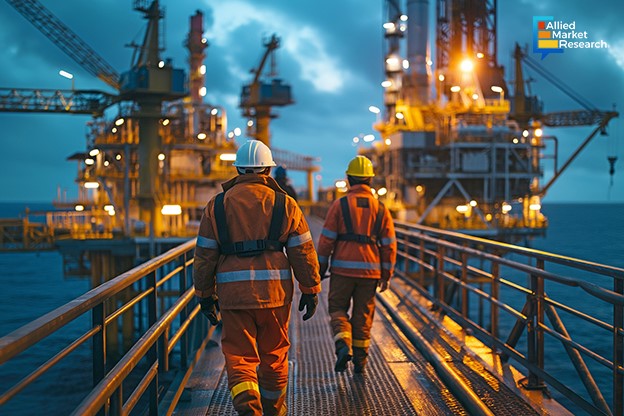How Have Artificial Intelligence and UAVs Helped Oil Well Inspection Service Providers Increase their Revenue Share in 2025?

24 Jan
2025
Key takeaways:
- Introduction
- Role of AI and drones in the industry
- Innovative product launches in the sector
In the post-Cold War era, oil and natural gas have become one of the most essential commodities globally. Their importance has grown to a point where they have turned out to be a major reason behind alliances and geopolitical tensions among different countries. Almost all nations have invested heavily in improving the infrastructure associated with oil wells and gas reservoirs. Many governments have also partnered with private companies to improve the quality of processes involved in extraction and inspection. To address these evolving demands of the energy and power sector, several companies have launched dedicated oil well inspection services that supervise all the important activities related to the production and refining of these fossil fuels.
Increasing rate of technology integration in the oil well inspection services industry
Typically, oil well inspection services include supervision of all processes from drilling to capping, including volume and weight measurement, oil sampling, inventory management, laboratory analysis, and report publication. Moreover, many companies also offer suitability inspections, bunker surveys, and blend supervision facilities. As per a study by the International Energy Agency, the global oil demand is expected to rise by 6% between 2022 to 2028, thus increasing the popularity of these services exponentially. Moreover, government agencies worldwide have enacted legislation mandating oil companies to develop comprehensive quality control frameworks which have further broadened the scope of the landscape. The oil well inspection services industry, which accounted for $1.4 billion in 2023, is predicted to gather a revenue of $2.5 billion by 2033, rising at a CAGR of 6.1% during 2024-2033.
Along with these factors, the increasing integration of advanced technologies and innovations by oil well inspection service providers have played an important role in the growth of the market. For example, companies have started deploying AI-based tools for real-time monitoring of production lines. The machine learning algorithms embedded in these systems collect data based on usage patterns and help detect any deviations or anomalies so that quick intervention becomes possible. This ultimately reduces the chances of disruptions and enhances the overall productivity of oil and gas extraction processes. The data-driven decision-making facilitated by AI and machine learning aids businesses in allocating their resources optimally, thereby reducing wastage and bringing down input costs substantially. Moreover, these solutions improve the accuracy and precision of inspection and testing significantly.
Apart from AI and ML, the deployment of drones and unmanned aerial vehicles for inspection activities has also increased in the industry. Advanced drones feature superior cameras and sensors that capture high-quality images, thus enabling companies to remotely monitor oil wells and natural gas reservoirs. The use of UAVs has reduced the need to employ manual laborers in dangerous offshore platforms and refineries, thus improving the overall safety of the employees.
Heavy investments in R&D activities by leading companies impacting the industry positively
Along with the innovations and advancements in the oil well inspection services sector, the growing investments by multinational giants in R&D activities have contributed to the expansion of the industry. Many of these businesses have also launched products and services that cater to the demands of their customer base and clients holistically. For example, in May 2024, Element Materials Technology, an industrial inspection services provider, announced the launch of a new range of asset integrity management (AIM) solutions for testing equipment involved in upstream and downstream refining and processing of oil and natural gas. The platform deploys AI-powered tools and digital sensors for various activities, including layout development, facility mapping, and report compilation.
On the other hand, in September, NDT Global, a pipeline diagnostic solutions developer, announced that it had signed a definitive partnership agreement with Aramco, a petroleum refineries enterprise. As part of their collaboration, the two companies have jointly unveiled a 56" ultrasonic inline inspection tool for the oil and gas exploration industry. The predictive analysis, pipeline health assessment, and risk evaluation services offered by the product have made it one of the most innovative systems available in the market today.
In essence, the growing demand for oil and natural gas from various countries across the globe is expected to open new avenues for growth in the oil well inspection services industry. Furthermore, the introduction of emerging technologies such as AI, machine learning, and unmanned aerial vehicles is anticipated to strengthen the foothold of the landscape in the coming period.
For more insights on the latest trends and advancements in the industry, contact our experts, here!

Akhilesh Prabhugaonkar
Author's Bio- Akhilesh Prabhugaonkar holds a bachelor’s degree in Electronics Engineering from the reputed Vishwakarma Institute of Technology. He has a special interest in the fields of forensics, world history, international relations and foreign policy, sports, agriculture, astronomy, security, and oceanography. An ardent bibliophile and melophile, Akhilesh loves to write on topics of his interest and various other societal issues. This love for writing made him enter the professional world of content writing and pursue his career in this direction.
Avenue: Entire Library membership of Allied Market Research Reports at your disposal
- Avenue is an innovative subscription-based online report database.
- Avail an online access to the entire library of syndicated reports on more than 2,000 niche industries and company profiles on more than 12,000 firms across 11 domains.
- A cost-effective model tailored for entrepreneurs, investors, and students & researchers at universities.
- Request customizations, suggest new reports, and avail analyst support as per your requirements.
- Get an access to the library of reports at any time from any device and anywhere.
Related Post
-
How are Submarine Cables Transforming Global Connectivity with Enhanced User Experience?
-
Endoscopy Procedures: Transformations in Techniques and Applications
-
AI-Powered Video Analytics: How the Product Actually Works for enterprises
-
Painting Robots: Transforming Precision Coating and Creative Applications
-
Innovations in Pharmacovigilance Systems Advancing Patient Safety
-
Understanding Edge Security: Keeping Data Safe Near the Source
-
Exploring the Use and Advancements of 3D Laser Scanners in Professional Applications
-
Reinforcing Industrial Controls with Smarter Tools and Training








